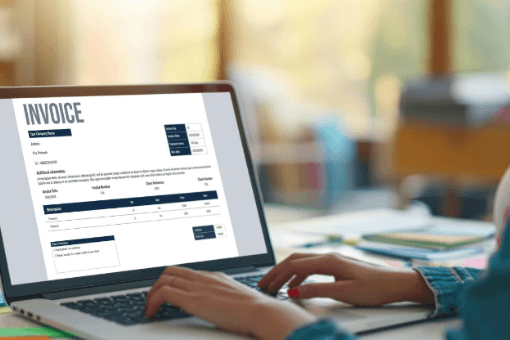Introduction to Vendor and Customer Invoices

Invoices are a crucial part of every business transaction. Whether you’re purchasing goods, selling services, or managing business expenses, invoices keep financial records clear and organized.
Understanding the difference between a vendor invoice vs customer invoice is essential for accurate bookkeeping, cash flow management, and compliance with financial regulations. In this guide, we’ll break down their key differences, functions, and impact on business accounting.
What is a Vendor Invoice?

A vendor invoice is a bill issued by a supplier (vendor) to a business for goods or services provided. This invoice includes details such as the amount due, payment terms, and descriptions of the products or services supplied.
Who Issues a Vendor Invoice?
A vendor invoice is sent by the supplier (or vendor) to the business that purchased goods or services. For example:
- A software company bills a retail store for using its POS system.
- A manufacturing company invoices a wholesaler for raw materials supplied.
Since vendor invoices represent business expenses, they directly impact a company’s cash outflow.
What is a Customer Invoice?
A customer invoice is issued by a business to its clients or customers for goods sold or services rendered. This invoice details the total amount due, payment deadlines, and any applicable taxes.
How is a Customer Invoice Different from a Vendor Invoice?
A customer invoice serves as a sales record, while a vendor invoice represents a business expense. For instance:
- A consulting firm sends a customer invoice to a client for services provided.
- An online store invoices a customer for purchased products.
Unlike vendor invoices, customer invoices contribute to revenue and impact a company’s accounts receivable.
Key Differences Between Vendor Invoice and Customer Invoice
Issuer and Recipient
- Vendor Invoice → Issued by suppliers/vendors to businesses.
- Customer Invoice → Issued by businesses to their customers.
Purpose and Use Case
- Vendor Invoice → Requests payment for goods or services provided by a supplier.
- Customer Invoice → Requests payment from customers for products or services sold.
Accounting Treatment
- Vendor Invoice → Recorded as a business expense (accounts payable).
- Customer Invoice → Recorded as revenue (accounts receivable).
Payment Terms and Processing
- Vendor Invoice → Businesses must pay vendors within agreed terms (e.g., Net 30, Net 60).
- Customer Invoice → Customers are required to pay businesses based on the invoice terms.
How Vendor and Customer Invoices Impact Business Accounting

Both invoices play a significant role in financial management:
- Vendor invoices impact cash flow by determining how much a business owes.
- Customer invoices affect revenue by tracking incoming payments.
Proper vendor invoice management vs customer invoice management ensures timely payments, avoids financial discrepancies, and improves overall cash flow.
Examples of Vendor and Customer Invoices in Business

| Scenario | Vendor Invoice | Customer Invoice |
| A restaurant orders food supplies | Supplier invoices the restaurant | The restaurant invoices customers for meals |
| A marketing agency hires a freelancer | Freelancer invoices the agency | The agency invoices its client for services |
| A SaaS company subscribes to cloud hosting | Hosting provider invoices the SaaS company | The SaaS company invoices users for subscriptions |
These examples highlight how businesses handle vendor invoice vs customer invoice cost and payments differently.
Best Practices for Managing Vendor and Customer Invoices
For Vendor Invoices:
✅ Automate invoice tracking to prevent late payments.
✅ Negotiate better payment terms with suppliers.
✅ Maintain organized records for audits and tax filing.
For Customer Invoices:
✅ Set clear payment terms to avoid delays.
✅ Use automated invoicing software to streamline billing.
✅ Follow up on overdue invoices to maintain cash flow.
Conclusion – Which Invoice Matters Most for Your Business?
Both vendor and customer invoices are essential for smooth financial operations. A business must balance timely vendor payments with efficient customer invoicing to maintain cash flow and financial stability.
By mastering vendor invoice management vs customer invoice management, companies can improve their financial health, reduce errors, and ensure steady growth.
Need a smarter way to manage your invoices? Contact us today to explore AI-powered invoicing solutions! 🚀


